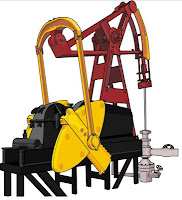अब कहाँ दूसरों के दुःख में दुःखी होने वाले
 |
घर को खोजें रात दिन, घर से निकले गाँव
वो रस्ता ही खो गया, जिस रस्ते था गाँव
-निदा फ़ाज़ली |
प्रश्न १: प्रकृति में आए असंतुलन का क्या परिणाम हुआ?
उत्तर : प्रकृति में आए असंतुलन का यह परिणाम हुआ कि कोई भी प्रदूषण के प्रभाव से अछूता नहीं रहा | पक्षियों ने बस्तियों से भागना शुरू कर दिया | गर्मियों में ज़्यादा गर्मी, बेवक्त की बरसातें, भूकंप, सैलाब, तूफ़ान, ज़लज़ले और नित नए रोगों के रूप में हम इस असंतुलन के प्रभाव को स्पष्ट देख सकते हैं | प्रकृति की सहनशक्ति की एक सीमा होती है और जब उसके साथ अत्यधिक छेड़छाड़ की जाती है, तो प्रकृति में असंतुलन पड़ जाता है | इससे पर्यावरण पर बुरा प्रभाव पड़ता है |
प्रश्न २: लेखक की माँ ने पूरे दिन रोज़ा क्यों रखा ?
उत्तर : लेखक की माँ ने पूरे दिन का रोज़ा रखा ताकि वह अपनी भूल का प्रायश्चित कर सके | लेखक के ग्वालियर के घर में एक कबूतर के जोड़े ने अपना घोंसला बना लिया था, जिसमें रखे दो अण्डों में से एक बिल्ली ने तोड़ दिया था | लेखक की माँ को यह देखकर बहुत दुःख हुआ | उन्होंने स्टूल पर चढ़कर दूसरे अंडे को बचाने की कोशिश की परन्तु वह अंडा उनके हाथ से गिरकर टूट गया | कबूतरों की परेशानी और दुःख देखकर माँ की आँखों में आँसू आ गए | उस दुःख में उन्होंने कुछ भी खाया-पीया नहीं और बस रोती रहीं | खुदा से माफी माँगने के लिए उन्होंने पूरे दिन का रोज़ा रखा और नमाज़ पढ़कर इस गलती को माफ़ करने की दुआएँ मांगती रही |
प्रश्न 3: 'डेरा डालने' से आप क्या समझते हैं ?










